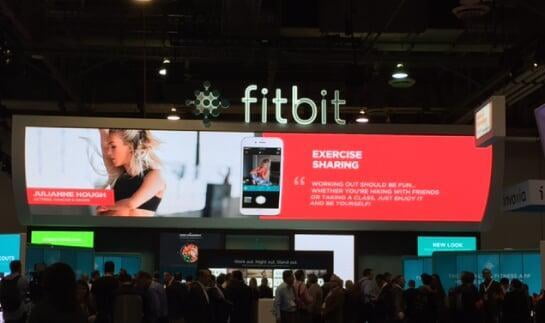
This year’s Consumer Electronic Show in Las Vegas, brought together 177,393 attendees from all over the world focused on the latest and greatest in technology innovation. We were excited to be a part of the buzz, navigating the aisles to stay on top of the latest fitness technology trends and contributing to the industry dialog by being a part of a Garmin panel discussion. Here are four of the many great innovations happening within the world of wearables.
1. The power houses of device manufacturers continue to shine; the smaller players have started to dwindle.
Although wearables continue to be a good portion of technology innovation, there were less exhibitors with new wearables this year compared to years past. The two big players with a strong presence at CES were Fitbit and Garmin. Fitbit continues to offer strong consumer brand recognition. Garmin displayed a wide range of solutions from a simple, inexpensive device, great for population health, all the way to high end devices, offering a broad range of features. Garmin also released a new series of Fenix devices with the Fenix 5S receiving a CES Innovation Award.
2. Wearables are getting a facelift.
As consumers seek to incorporate wearables into their everyday lifestyle, instead of just their workouts, many companies are taking note. Several device manufacturers in attendance highlighted devices that are beginning to look more like a high-end fashionable watch, rather than a rubber bracelet.
3. Wearables continue to be used new & noteworthy venues, including clinical use.
During the show, Motion Connected’s CEO, Michael Troup, participated in a panel discussion sponsored by Garmin on the current state of wearables. There were interesting examples of wearables for both workplace wellness and clinical use. Some innovative uses of wearables in clinical practice included predicting hospitalizations based on significant step count decreases and documented improvements in outcomes for cancer patients who had activity goals with devices. When asked where he saw wearables going in the next 5 years, Michael stated “I see the wellness and the clinical markets coming together as we have the same goal of creating healthier population and can work together on achieving this.”
4. Creating employee population engagement with wearables comes down to simplicity.
The panel also addressed the challenges typically faced with wearable programs and protocols. When asked specifically on the challenge of engagement in wellness programs, Michael shared “It is important that we take out the complexity of wellness programs and simplify to drive better engagement. Wearables can create that simplicity while also creating a buzz that drives interest in wellness programs.”
Overall, despite the decrease in number of wearable manufacturers, it is clear the use for the devices continues to grow in interesting ways. We’re excited to see where the future of wearables will take us in the next year and beyond.


